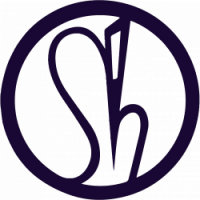Animation
Strange as it may seem, I’m going to begin my track through AI narrative history with the definition of animation as ‘the endowing of life and the endowing of motion’ (Chodlodenko, 2007). I begin here because the evolving definition of Animation as a practice in which the animator is the author of the animated world and everything in it is relevant to AI narrative in which the author has less control over the narrative aspect of the animated world.
Automata
Cyborg
I’m also going to talk about cyborg, Donna Harraway.
Cybernetics
cybernetics, systems design and how Crowds are controlled (Policing and the pandemic).
Quantum
2nd order cybernetics, the observer observing the observed and the particle/wave collapse.
Film Studies
Chodlodenko, returns to this topic again, referring to the way ‘animation as giving life to’ is Animation as film and media studies ‘blind spot’. (Chodlodenko, A. 2015).
First is my perennial annoyance—when attending conferences, lectures, etc., across all disciplines, including Film Studies—and hearing the words ‘animation’, ‘animate’ and cognate terms and phrases, like some thing ‘has a life of its own’, used all the time, but without any awareness, much less any address and interrogation, of them in their own right. They’re just part of the woodwork. I wanted to bring this discursive, but not only discursive, ‘blind spot’ regarding animation to light. (Cholodenko 2007a, p. 15)[1]
Although, he goes on to argue for art as a form of animation, for me this discourse aligns with my own intense irritation that the definition of Animation at that time was defined by theoreticians and didn’t resonate with my own experience of it which was that it was an immersive process, in which I was nested in several worlds simultaneously. The physical everyday world, the mental model of that world, my imagined world, space in which I created my imagined world where I engaged with the process of explicating that which was implicit. I did not give life or motion to my creations. That was not what it was about. It was about sharing my worlds with others as one might with any art but using the tools and processes I had, I produced something that came close to these worlds.
Game Studies
The limitation was that the audience was always on the outside. However, now due to the wonders of modern technology, the door was opened and viewers can now be participants, immersed in these worlds. So my personal definition is about the immersive-ness of Animation, not its ‘anima/animus’. I think that anywhere in which the makers of art are as loud, if not louder (due to the weight of theoretician theory history) rather than the the voice of the theoretician as consumers of art (even if their interview skills are amazing), is a good thing. Game theory may have this for now.
A.I
Intelligence, complex information and interaction with a seeming ‘life force’ that is autonomous.
The recursive nature of making stop motion animation can be quite obsessive although satisfying is completely immersive; but for me it is not a very balanced way of living and creating art. The attention to detail to a myopic extent can be entirely exhausting and i often found myself having to keep something back in reserve.
I see now that leaning on automation, in certain parts of the production is a healthier working practice than trying to control all aspects of the world creation to this sane myopic degree. Unity is one of these tools that will help in this automation and through which I can hvae a high degree of control.
In terms of narrative, I see AI as a tool of equal benefit because it will allow greater audience participation, allowing for uncertainty and chance to enter the narrative animation process. Releasing authorship and control is a good thing. It might not be what the great tones of history which point to individual authorship of genius but it can be a social creation, an intimate exchange and a much healthier state for the artist to occupy.
Turin Test
Measure of successful A.I.
References
Cholodenko, A. (2007d). ‘Speculations on the Animatic Automaton’, The Illusion of Life 2: More Essays on Animation, Power Publications, Sydney. Pp 486-528
https://www.academia.edu/39364823/Speculations_on_the_Animatic_Automaton
Accessed 26/05/2020
Chodlodenko, A (2015)
https://journal.animationstudies.org/alan-cholodenko-animator-as-artist-artist-as-animator/
Accessed 26/05/2020

